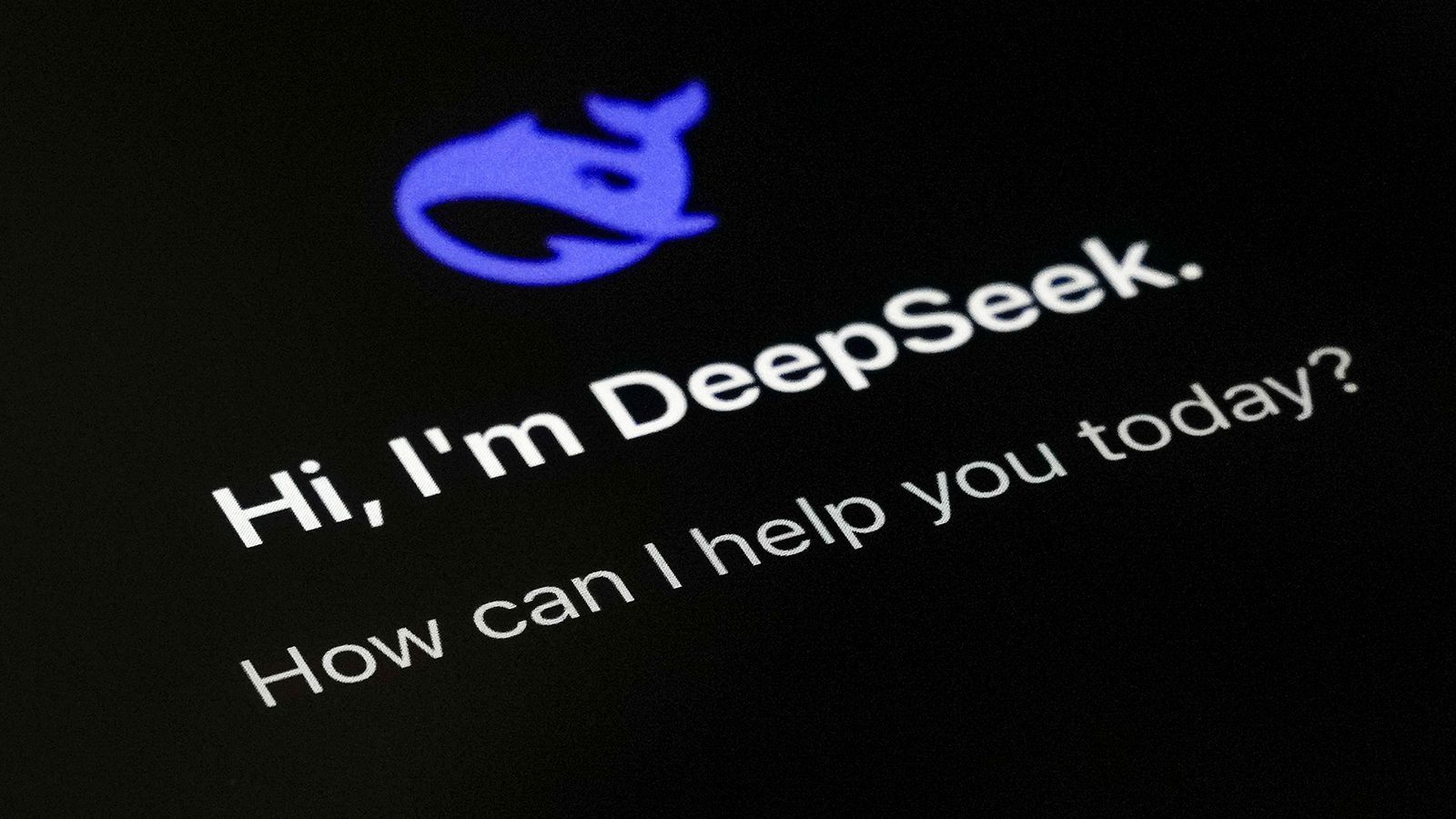In the rapidly evolving world of artificial intelligence, the prevailing belief has been that only tech giants with massive financial and computing resources can develop cutting-edge large language models (LLMs). This notion is now being challenged by a new player that has made waves in the AI industry.
On January 20, 2025, a revolutionary AI firm released its latest LLM, outperforming existing models at a fraction of the cost. This disruptive innovation has sent shockwaves through the AI landscape, shaking the dominance of established companies and raising concerns in global markets.

A Game-Changer in AI Development
The newly introduced AI model, developed by an emerging AI research company, has proven that state-of-the-art AI capabilities can be achieved without requiring billions of dollars in investment. Unlike proprietary AI models from OpenAI, Google DeepMind, and Anthropic, this new model follows an open-source philosophy, providing users with free access to its advanced functionalities.
Within days of its release, the AI assistant app built on this model skyrocketed to the top of Apple’s App Store, surpassing OpenAI’s ChatGPT in downloads. The overwhelming adoption led to a significant stock market sell-off on January 27, 2025, as investors reassessed the valuation of U.S.-based AI and semiconductor companies, including Nvidia, Microsoft, Meta, and Google.
The DeepSeek AI
This revolutionary AI company, founded in 2023, has gained global recognition for its rapid advancements in machine learning and natural language processing. The company operates as an independent AI research lab, focusing on efficiency and accessibility in AI development.
Unlike traditional AI firms that rely on expensive training methods, this new competitor employs innovative reinforcement learning techniques to enhance model efficiency. As a result, it has significantly reduced the cost and computing power required to train its AI models while delivering superior reasoning capabilities.
How It Compares to OpenAI
The rivalry between OpenAI and this DeepSeek ai firm has intensified, with both companies taking different approaches to AI development:
| Feature | OpenAI | DeepSeek Ai |
|---|---|---|
| Founding Year | 2015 | 2023 |
| Headquarters | San Francisco, USA | Asia |
| Development Focus | Broad AI applications | Efficient, open-source AI |
| Key Models | GPT-4o, o1 | Advanced AI LLM |
| Open Source Policy | Limited | Mostly open-source |
| Training Cost | Hundreds of millions of dollars | Less than $6 million |
| API Pricing | $15 per million tokens (input), $60 (output) | $0.55 (input), $2.19 (output) |
Innovations in AI Training
The company has introduced multiple groundbreaking innovations in AI training, including:
- Reinforcement Learning: A large-scale reinforcement learning approach focused on improving AI reasoning capabilities.
- Reward Engineering: A rule-based incentive system that enhances AI decision-making beyond conventional neural reward models.
- Distillation: A method to compress knowledge into smaller models without losing intelligence, allowing even lightweight models to perform complex tasks.
- Emergent Behavior Network: The discovery that complex reasoning can naturally develop within AI through reinforcement learning without explicit programming.
The Growing List of AI Models
Since its inception, the company has released multiple versions of its AI models, each improving upon the last:
- Code AI: A specialized model designed for programming tasks, released in late 2023.
- General AI Model V1: The first general-purpose AI model, introduced in early 2024.
- General AI Model V2: Released in mid-2024, this model significantly reduced training costs while improving efficiency.
- General AI Model V3: Launched in late 2024, it utilizes a mixture-of-experts approach to optimize performance.
- AI Reasoning Model: Released in early 2025, this model directly competes with OpenAI’s latest offerings at a fraction of the cost.
- Vision AI Model: An advanced vision-processing AI introduced in 2025, capable of understanding and generating complex images.
The U.S. Market Reaction and Concerns
The launch of this AI model has raised concerns within the U.S. technology sector, leading to a sell-off in major tech stocks. On January 27, 2025, the Nasdaq Composite fell by 3.4% at market opening, with Nvidia seeing a staggering 17% drop, wiping out approximately $600 billion in market capitalization.
Several key reasons are fueling the alarm in the U.S.:
- Cost Disruption: The new AI model costs significantly less to develop and operate, threatening the revenue streams of U.S. tech firms that have invested billions in AI.
- Technical Breakthroughs Despite Restrictions: The U.S. has imposed restrictions on exporting high-performance AI chips to certain countries. However, the new AI company has demonstrated that cutting-edge AI can be developed without access to these chips.
- Open-Source Threat: Unlike OpenAI’s subscription-based business model, this company offers its models for free, challenging the monetization strategies of existing AI firms.
- Geopolitical Implications: The rapid rise of an alternative AI leader outside the U.S. raises questions about global AI dominance and competition.
Cybersecurity Challenges
The success of the new AI model has also attracted cyber threats. On January 27, 2025, the company reported a large-scale cyberattack targeting its services, temporarily limiting new user registrations. Speculation suggests it was a Distributed Denial-of-Service (DDoS) attack aimed at disrupting its API and web-based chatbot interface.
Additionally, on January 29, 2025, cybersecurity researchers discovered a misconfigured backend database exposing chat histories, API keys, and operational logs. The company responded swiftly by securing its systems, but the incident raised concerns about data privacy and security in AI applications.
The Future of AI
The release of this AI model marks a turning point in the AI industry, proving that innovation and efficiency can outpace even the most well-funded tech giants. As the AI race heats up, users worldwide stand to benefit from more affordable, accessible, and capable AI technologies.
With geopolitical implications, economic shifts, and technological breakthroughs at play, the future of AI is more unpredictable than ever. One thing remains certain—the AI revolution is just getting started.